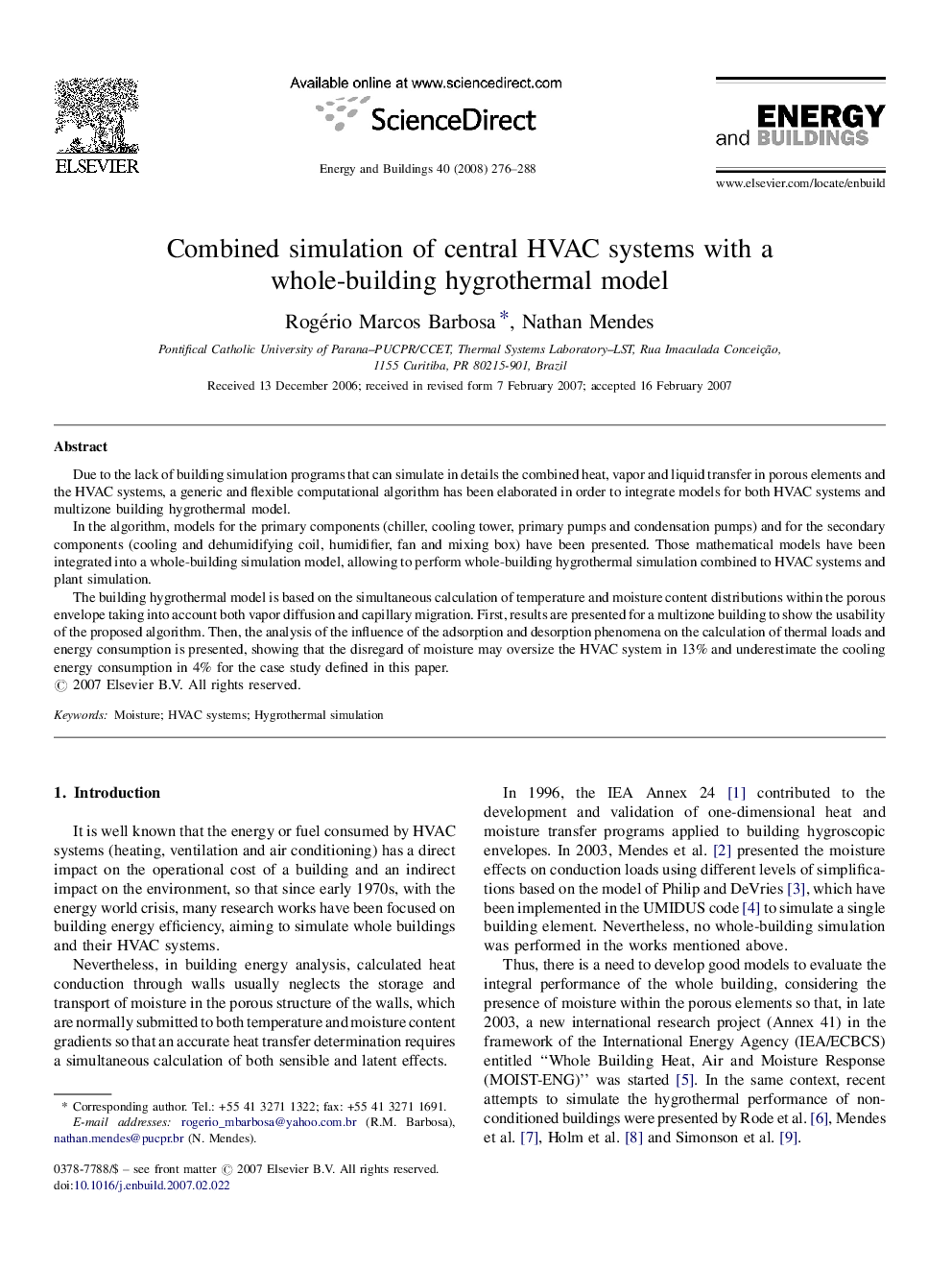| Article ID | Journal | Published Year | Pages | File Type |
|---|---|---|---|---|
| 265141 | Energy and Buildings | 2008 | 13 Pages |
Due to the lack of building simulation programs that can simulate in details the combined heat, vapor and liquid transfer in porous elements and the HVAC systems, a generic and flexible computational algorithm has been elaborated in order to integrate models for both HVAC systems and multizone building hygrothermal model.In the algorithm, models for the primary components (chiller, cooling tower, primary pumps and condensation pumps) and for the secondary components (cooling and dehumidifying coil, humidifier, fan and mixing box) have been presented. Those mathematical models have been integrated into a whole-building simulation model, allowing to perform whole-building hygrothermal simulation combined to HVAC systems and plant simulation.The building hygrothermal model is based on the simultaneous calculation of temperature and moisture content distributions within the porous envelope taking into account both vapor diffusion and capillary migration. First, results are presented for a multizone building to show the usability of the proposed algorithm. Then, the analysis of the influence of the adsorption and desorption phenomena on the calculation of thermal loads and energy consumption is presented, showing that the disregard of moisture may oversize the HVAC system in 13% and underestimate the cooling energy consumption in 4% for the case study defined in this paper.
